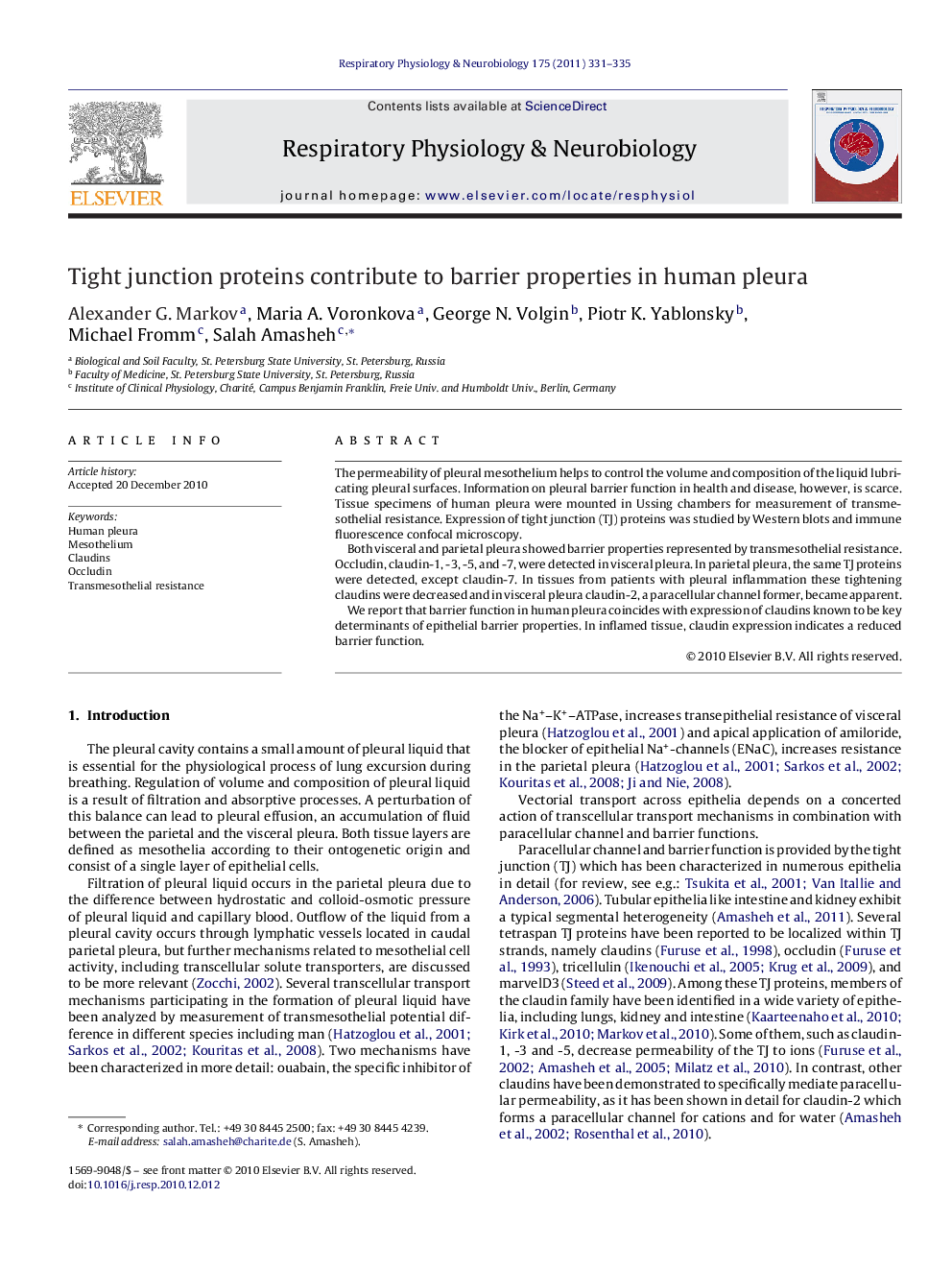| Article ID | Journal | Published Year | Pages | File Type |
|---|---|---|---|---|
| 5926507 | Respiratory Physiology & Neurobiology | 2011 | 5 Pages |
The permeability of pleural mesothelium helps to control the volume and composition of the liquid lubricating pleural surfaces. Information on pleural barrier function in health and disease, however, is scarce. Tissue specimens of human pleura were mounted in Ussing chambers for measurement of transmesothelial resistance. Expression of tight junction (TJ) proteins was studied by Western blots and immune fluorescence confocal microscopy.Both visceral and parietal pleura showed barrier properties represented by transmesothelial resistance. Occludin, claudin-1, -3, -5, and -7, were detected in visceral pleura. In parietal pleura, the same TJ proteins were detected, except claudin-7. In tissues from patients with pleural inflammation these tightening claudins were decreased and in visceral pleura claudin-2, a paracellular channel former, became apparent.We report that barrier function in human pleura coincides with expression of claudins known to be key determinants of epithelial barrier properties. In inflamed tissue, claudin expression indicates a reduced barrier function.
